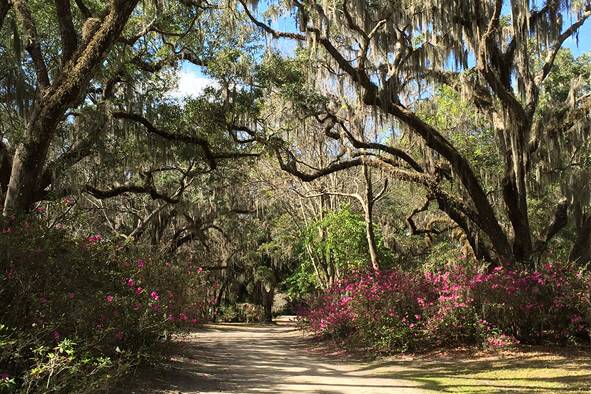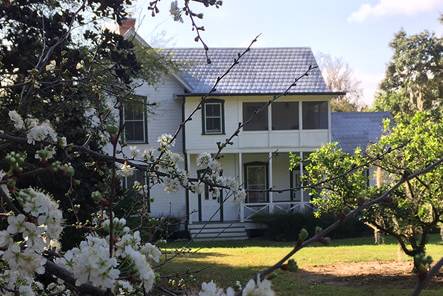
Genius Preserve
The Genius Preserve in Winter Park is a historical landscape, a remaining tie to the romantic "Old Florida" Marjorie Rawlings revealed in Cross Creek.
Owned by the Genius/Morse Foundation of Winter Park, Rollins students have been conducting research projects, class field work and also received land stewardship scholarships while interning on the property with the Department of Environmental Studies.

Charles Hosmer Morse
Charles Hosmer Morse was a wealthy industrialist and philanthropist. He first visited Winter Park in the early 1880s and was enamored by its natural beauty. He purchased property on Lake Osceola and soon became involved in the development of the city of Winter Park. By 1904, he had become the largest landowner in the area. His land donations to the city, many of them made anonymously, are sites of such prominent city facilities as City Hall, the Woman’s Club, the municipal golf course and Central Park.
By 1915, Charles Hosmer Morse had retired to Winter Park permanently. In 1920, just one year before he passed away, he acquired land situated between lakes Virginia, Berry and Mizell. On this site, he planted citrus groves and carved a scenic road that would later become a local attraction: Winter Park’s treasured Genius Drive.
Jeannette Genius McKean
Jeannette Genius McKean is the granddaughter of Charles Hosmer Morse. She was born in 1909 into an atmosphere of refined tastes and talents. Both the Morse and Genius families were collectors of fine art. Jeannette’s mother, Elizabeth Morse Genius, loved to paint, and passed this artistic bent onto her daughter. In college, Jeannette studied art and interior design. She had an affinity for designing “vignettes,” or themed rooms. As well, she was an acclaimed painter, heavily influenced by the natural world.
Jeannette and Hugh McKean
In 1936, Jeannette’s parents, Elizabeth Morse and Richard Genius, built a Spanish renaissance-style home on Lake Virginia in Winter Park across from Rollins College. Eventually, Jeannette and her husband, Dr. Hugh McKean, inherited Wind Song and the surrounding land. Here, they created an oasis where natural beauty flourished.
Hugh McKean
Hugh McKean was still an undergraduate at Rollins College when he met his future wife, Jeannette Genius. Like Jeannette, Hugh McKean was also an artist; for nearly 70 years, he painted the cultural and natural aesthetic of central Florida. His early paintings won him an invitation to study with a group in the home of Louis Comfort Tiffany. He returned to Orlando as an artist, an art journalist and professor of art at Rollins. He became the director of the Morse Gallery of Art upon its opening in 1942. Hugh McKean and Jeannette Genius were married in 1945, and in 1952, he became President of Rollins.
Hugh’s most memorable contribution to the Wind Song estate is the introduction of the peacock. He became enamored with these ornate birds when he first encountered them on a trip to Asia. Upon return to the U.S., he imported several to reside on their estate. This tradition continues today.
